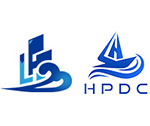First, the material properties of aluminum foil and aluminum profiles are not suitable for direct production through the die-casting process. This is because during the die-casting process, the molten aluminum alloy metal liquid contains a large amount of hydrogen, which is difficult to remove during the filling process, resulting in defects such as pores in the produced aluminum alloy die-casting parts. In addition, the aluminum alloy metal liquid will have a large volume shrinkage during cooling and molding, and it is easy to stick to the film. These factors increase the difficulty of producing high-precision aluminum alloy die-casting parts1.
Secondly, the production of aluminum profiles usually involves more complex process flows and technical requirements, including mold design, material selection, temperature control and other links. These factors will affect the quality and performance of the final product. Although the die-casting process is suitable for the production of some specific aluminum alloy parts, for products such as aluminum foil and aluminum profiles, their material properties and application requirements determine that they are not suitable for direct production using the die-casting process.
In summary, the reasons why aluminum foil and aluminum profiles cannot be directly produced by die casting mainly include their material characteristics and process limitations, as well as the technical requirements and application scope limitations of the die casting process itself. In actual production, the appropriate production method should be selected according to the specific needs of the product and the process characteristics.
















